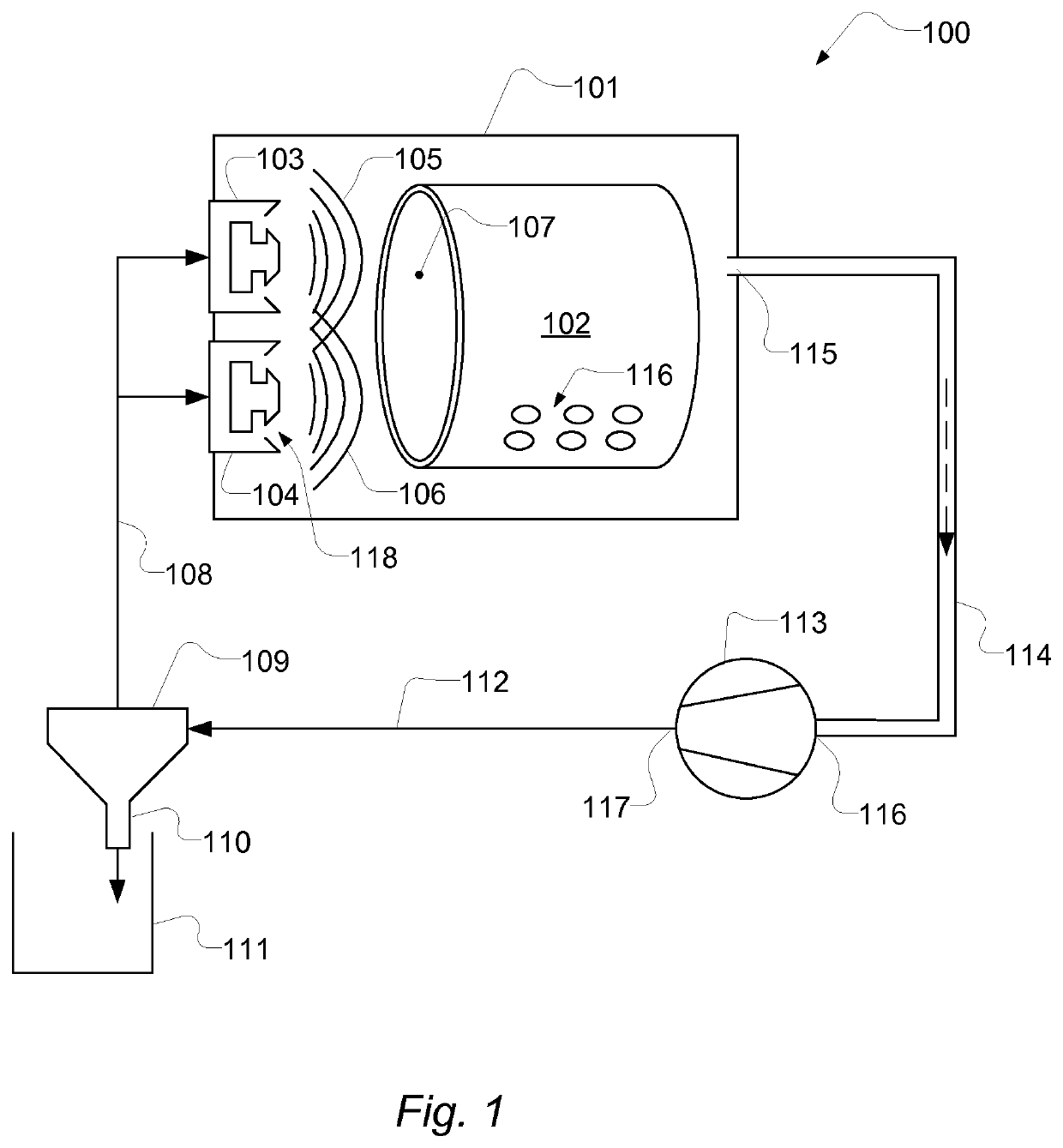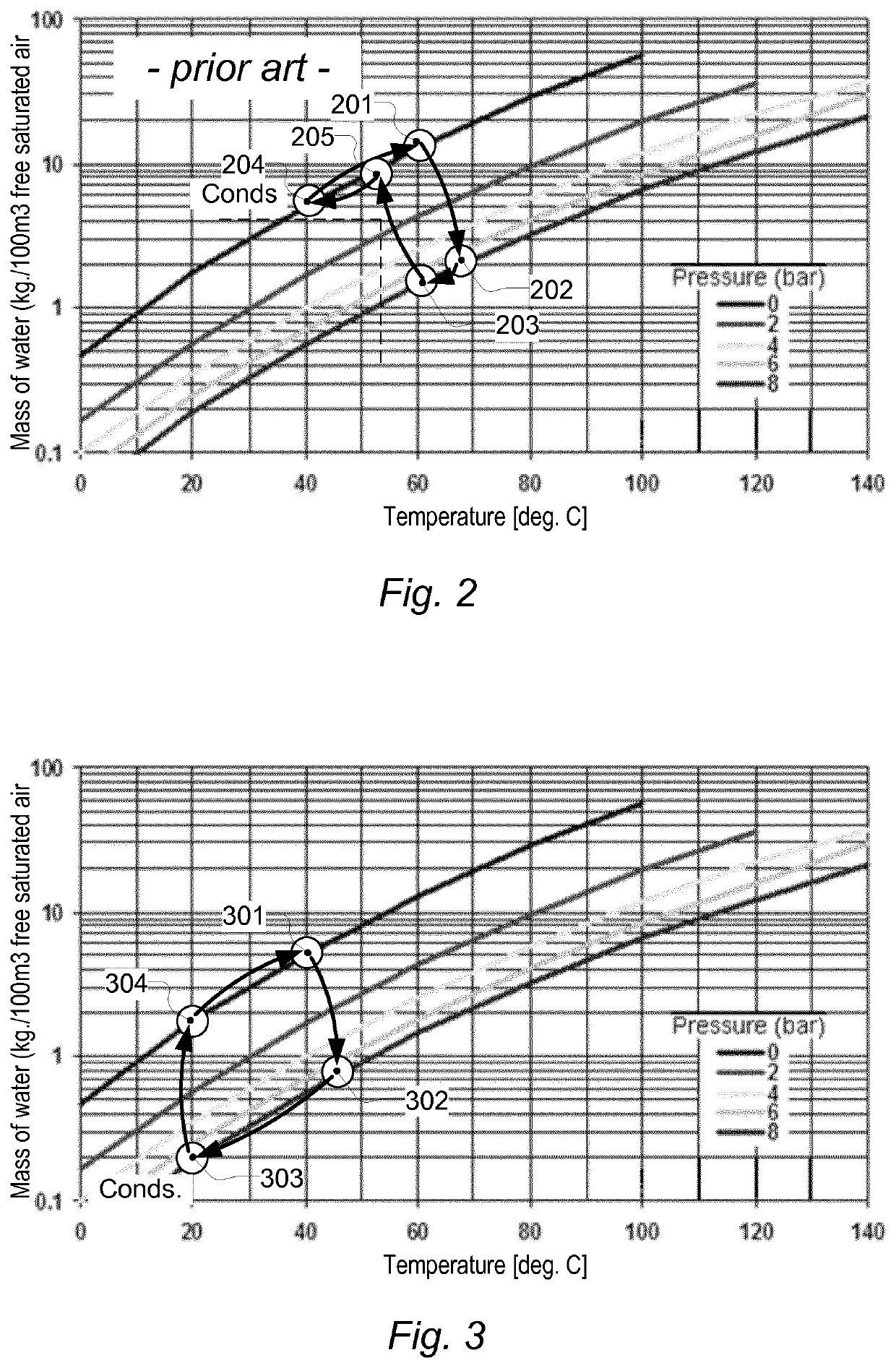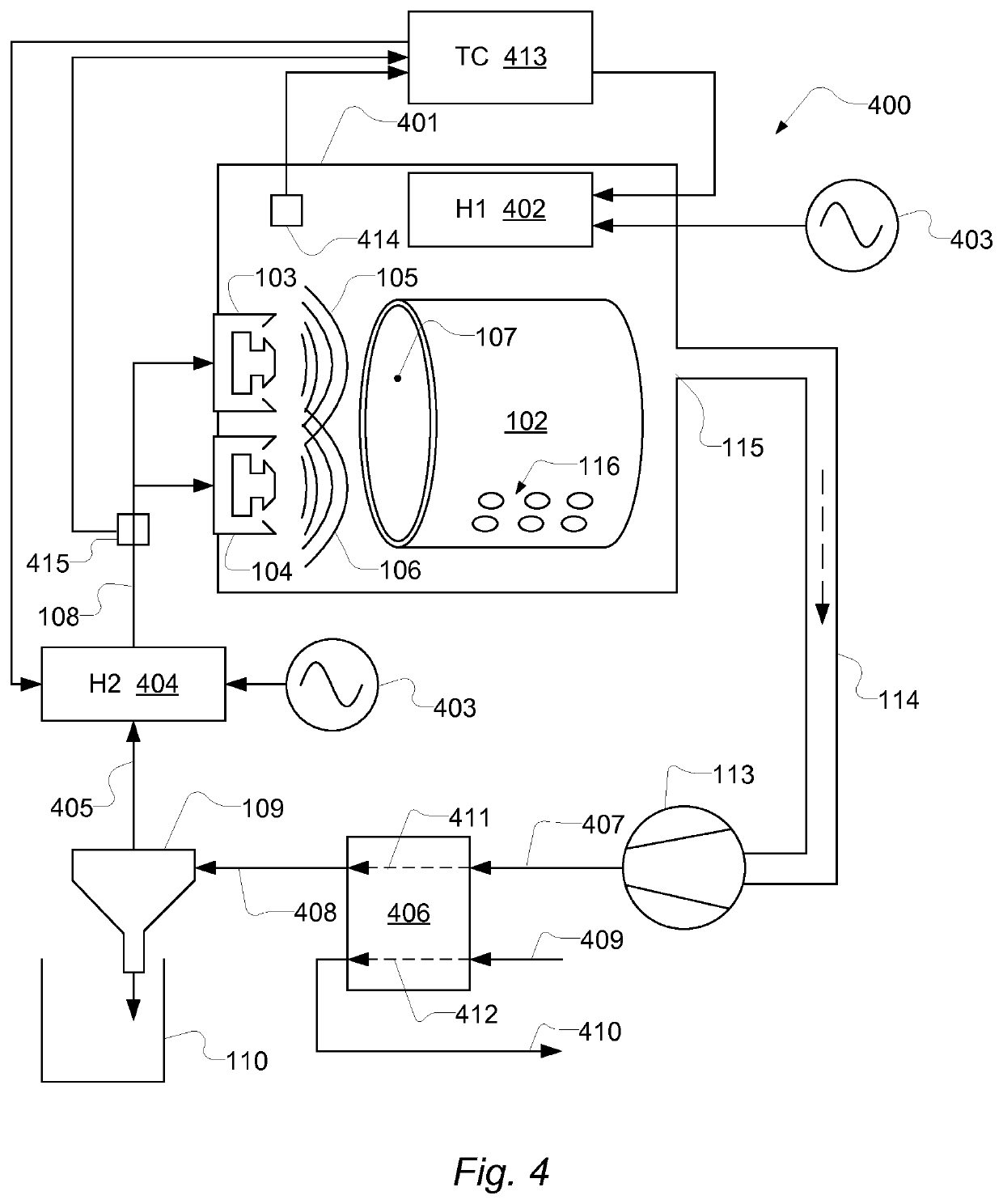Dryer and method of drying
a technology of dryer and dryer, which is applied in the direction of drying, heating apparatus, lighting and heating equipment, etc., can solve the problems of contaminating products, significant risk of burning products, and efficacy of such a prior art dryer
- Summary
- Abstract
- Description
- Claims
- Application Information
AI Technical Summary
Benefits of technology
Problems solved by technology
Method used
Image
Examples
first embodiment
[0097]FIG. 1 shows a dryer. The dryer designated by reference numeral 100, comprises a dryer chamber 101 with a drum 102 with perforations 116 and is coupled to form a closed loop gas-circulating system for circulating gas, such as atmospheric air, through the dryer chamber 101. The gas may comprise additives for treatment of the wet or humid items to be dried.
[0098]The closed loop gas-circulating system recirculates the gas and comprises a compressor 113 coupled to receive return gas from the dryer chamber 101 via a gas outlet 115 of the dryer chamber 101 and via a duct 114 coupled to the outlet 115. The duct is configured to guide a flow of return gas to a compressor intake 116 of the compressor 113 to compress the return gas to provide compressed gas. The compressed gas is provided at a compressor outlet 117 of the compressor 113 Return gas is a relatively humid gas escaping from the dryer chamber via the gas outlet 115 and the duct 114.
[0099]The compressor outlet 117, supplying ...
second embodiment
[0106]FIG. 4 shows a dryer. In this embodiment, the dryer 400 comprises a heater H1, 402 installed inside the dryer chamber 401 and being operatively controlled by a temperature controller TC, 413 to maintain a temperature inside the dryer chamber at a set temperature or within a temperature range. The temperature controller 413 is coupled to one or more temperature sensors 414 arranged at the dryer chamber to sense the temperature inside the dryer chamber 401. The heater 402 may be an electric heater e.g. a heater known from conventional tumble dryers such as a heater operated from a mains supply 403 of electrical power. The heater 402 is installed inside the dryer chamber such that heated air or gas can circulate through perforations 116 as it is known in the art.
[0107]The dryer 400 comprises a further heater H2, 404 which is configured to heat compressed gas flowing from the separator 109 to the gas dischargers 103; 104. Compressed gas pipes 108 and 405 deliver the compressed gas...
third embodiment
[0114]FIG. 5 shows a dryer. In this embodiment the dryer is designated by reference numeral 500. Here, the dryer comprises a heat pump 505. The heat pump 505 may an active heat pump comprising a compressor that drives the heat pump circuit. The heat pump comprises a first heat pump gas path 506 sitting in the closed loop gas-circulating system between the compressor 113 and the separator 109 and a second heat pump gas path 507. The second heat pump gas path 507 sits in the closed loop gas-circulating system between the separator 109 and the gas discharger 103;104. The heat pump is configured with a heat pump circuit 508 for extracting heat energy from the first heat pump gas path 506 and delivering heat energy to the second heat pump gas path 507. The heat pump circuit circulates a heat exchanging medium such as a refrigerant.
[0115]In some aspects the heat pump is alternatively coupled to deliver heat energy to a heater H1, 502 installed inside the dryer chamber 501.
[0116]Alternativ...
PUM
 Login to View More
Login to View More Abstract
Description
Claims
Application Information
 Login to View More
Login to View More - R&D
- Intellectual Property
- Life Sciences
- Materials
- Tech Scout
- Unparalleled Data Quality
- Higher Quality Content
- 60% Fewer Hallucinations
Browse by: Latest US Patents, China's latest patents, Technical Efficacy Thesaurus, Application Domain, Technology Topic, Popular Technical Reports.
© 2025 PatSnap. All rights reserved.Legal|Privacy policy|Modern Slavery Act Transparency Statement|Sitemap|About US| Contact US: help@patsnap.com



